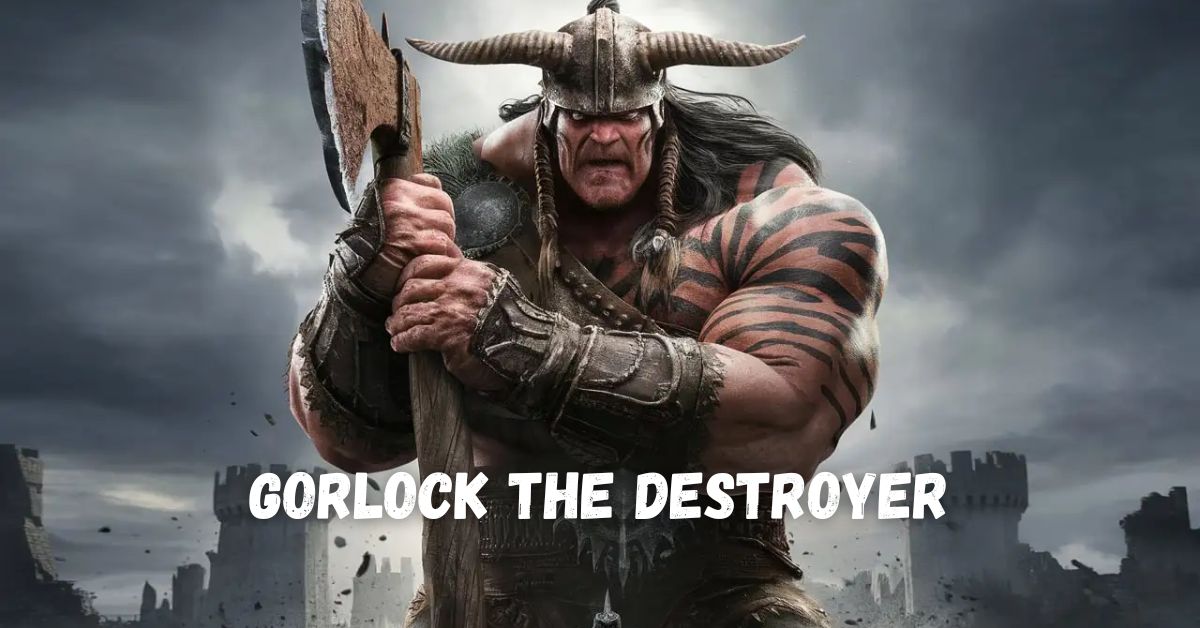In the ever-changing landscape of internet culture, few memes have made as explosive an impact as Gorlock the Destroyer. What began as a single, offhand TikTok video in late 2023 quickly spiraled into one of the most recognizable viral phenomena of the digital age. The meme’s creator, Ali C. Lopez, never expected her exaggerated villain persona to take on a life of its own but within weeks, Gorlock wasn’t just a joke; it was a full-blown cultural moment.
This article dives deep into the journey of Gorlock the Destroyer, from its accidental birth to its evolution into a movement that sparked discussions about trans visibility, meme ethics, and the unpredictable nature of internet fame. By 2025, the meme has outlived the typical viral lifespan, leaving behind a legacy that forces us to ask: What does it mean to be a “human meme” in the modern age?
The Birth of Gorlock: How One Clip Took Over the Internet
The Original TikTok That Started It All
Ali C. Lopez’s now-legendary video was deceptively simple. In it, she dramatically proclaimed herself “Gorlock the Destroyer,” adopting the exaggerated tone of a cartoon supervillain. The clip was absurd, self-aware, and—most importantly—immediately memeable.
What made it work?
- The delivery: Ali’s deadpan yet theatrical performance struck the perfect balance between sincerity and satire.
- The name itself: Gorlock the Destroyer sounded like something ripped from a fantasy novel or a B-movie, making it ripe for parody.
- Visual appeal: The framing and Ali’s expressive demeanor made it easy to remix.
Within hours, the video spread beyond TikTok, popping up on Twitter, Reddit, and Instagram. People began reposting it with captions like “When you walk into the wrong classroom” or “Me confronting my sleep paralysis demon.” The meme had officially taken its first breath.
Why This Meme Went Viral
Not every funny TikTok becomes a phenomenon—so why did Gorlock stick?
- Relatable exaggeration – Everyone has had a moment where they playfully inflated their own importance. Gorlock captured that universal feeling in a way that was both ridiculous and endearing.
- Meme versatility – The clip was a blank canvas. People could edit it into Star Wars scenes, Dungeons & Dragons memes, or even political satire.
- The Jabba the Hutt comparison – Almost immediately, viewers noticed Ali’s posture and cadence resembled Star Wars’ infamous crime lord. This accidental parallel gave the meme an extra layer of humor.
By the time reaction videos and remixes flooded YouTube, Gorlock the Destroyer was no longer just a TikTok—it was an internet-wide inside joke.
The Evolution of Gorlock: From Joke to Internet Mythology
How the Internet Expanded the Lore
Memes rarely stay in their original form—they mutate, evolve, and sometimes develop entire mythologies. Gorlock was no exception.
- Photoshop Battles & Fan Art – Digital artists reimagined Gorlock as a Godzilla-style kaiju, a Dark Souls boss, and even a Warhammer 40K character. Some edits were so elaborate they became memes themselves.
- AI Voiceovers & Dubs – Text-to-speech programs gave Gorlock new monologues, from Shakespearean soliloquies to Dragon Ball Z power-up screams.
- “Gorlock vs.” Meme Templates – Users inserted the character into fictional battles (“Gorlock vs. Shrek”, “Gorlock vs. The IRS”), turning her into a pop-culture combatant.
The meme had become bigger than Ali—it was now a collaborative project, shaped by thousands of anonymous creators.
When the Meme Outgrew Its Creator
At first, Ali embraced the attention. She made follow-up videos playing into the joke, even adopting Gorlock as a personal brand. But as the meme spread, some corners of the internet took it too far.
- Body-shaming edits – Some trolls zoomed in on Ali’s appearance, twisting the joke into cruelty.
- Overexposure backlash – As with any viral figure, a subset of the internet grew tired of seeing Gorlock everywhere.
- The “Jabba” comparison debate – While some saw it as harmless fun, others argued it reinforced negative stereotypes.
Ali soon found herself in a tricky position: how do you control a meme that no longer belongs to you?
Ali C. Lopez Speaks: Reclaiming Gorlock
From Viral Target to Empowered Creator
Rather than let the meme define her, Ali took control of the narrative.
- Podcast & Interview Appearances – She spoke candidly about the surreal experience of becoming a meme, appearing on shows like Tiffany Ferguson’s Internet Analysis and The Meme Machine.
- Monetizing the Trend – Like other viral figures before her, Ali leveraged her fame into revenue streams: Cameo shoutouts, Patreon exclusives, and even a Gorlock-themed merch line.
- Setting Boundaries – When edits crossed into harassment, Ali pushed back, reminding followers that behind the meme was a real person.
The Shift From Mockery to Fandom
Over time, the tone around Gorlock changed. What began as ironic shitposting morphed into genuine admiration for Ali’s confidence and comedic timing.
- Defensive Fanbase – Supporters shut down hate comments, reframing Gorlock as a celebration of unapologetic self-expression.
- Queer Community Embrace – Many LGBTQ+ fans saw Ali’s handling of the meme as a masterclass in owning one’s narrative.
By mid-2024, Gorlock wasn’t just a joke—it was a symbol of resilience.
The Gorlock Effect: Trans Visibility and the Burden of Representation
Why This Meme Felt Different
As a trans woman, Ali’s viral fame came with extra layers of scrutiny.
- Historical Context – Memes like “Woman Yelling at Cat” or “Smudge the Cat” were harmless, but others (“Cash Me Outside”, “Overly Attached Girlfriend”) led to real-life harassment.
- The Fine Line – When does self-deprecating humor become a weapon for others to mock marginalized people?
How the Community Responded
Allies and LGBTQ+ advocates defended Ali, arguing that Gorlock worked because it was her joke—not one imposed upon her. The meme’s longevity proved that audiences could engage without cruelty.
The Dark Side of Meme Culture: When Satire Becomes Bullying
The Ethics of Viral Fame
- Case Studies – Wojak’s descent into far-right propaganda, “Bone Apple Tea” mocking non-native English speakers.
- TikTok’s Role – Algorithmic trends accelerate both fame and pile-ons.
Ali’s Stance: Humor With Limits
She laughed along with good-natured edits but called out genuine malice—a nuanced approach rare in meme culture.
The Influencer Economy: How Gorlock Went Mainstream
From Meme to Merch
- Cameo, Patreon, and brand deals (Duolingo’s “Learn the Gorlock Way” campaign).
- Can Gorlock Outlast the Hype? – Most memes fade, but Ali’s adaptability gave hers staying power.
The Double-Edged Sword of Internet Fame
The Mental Health Toll
- The whiplash of sudden visibility.
- Ali’s reflections on parasocial relationships.
What Happens When the Internet Moves On?
Some viral figures vanish; others, like Grumpy Cat, linger in nostalgia. Where will Gorlock land?
Beyond Gorlock: What This Tells Us About Internet Culture
Meme Literacy in the 2020s
Audiences now dissect virality in real-time—but do they consider its human cost?
Who’s Next?
The cycle will repeat—but hopefully, with more awareness.
Conclusion: The Legacy of Gorlock the Destroyer
Gorlock wasn’t just a meme—it was a case study in modern fame. From absurd joke to cultural moment, Ali’s story forces us to ask: Can we enjoy viral humor without dehumanizing its subjects?

DuolingoExperts, managed by MarkJohan, offers expert insights and tips for mastering languages. A tech-driven platform to enhance your learning experience.

